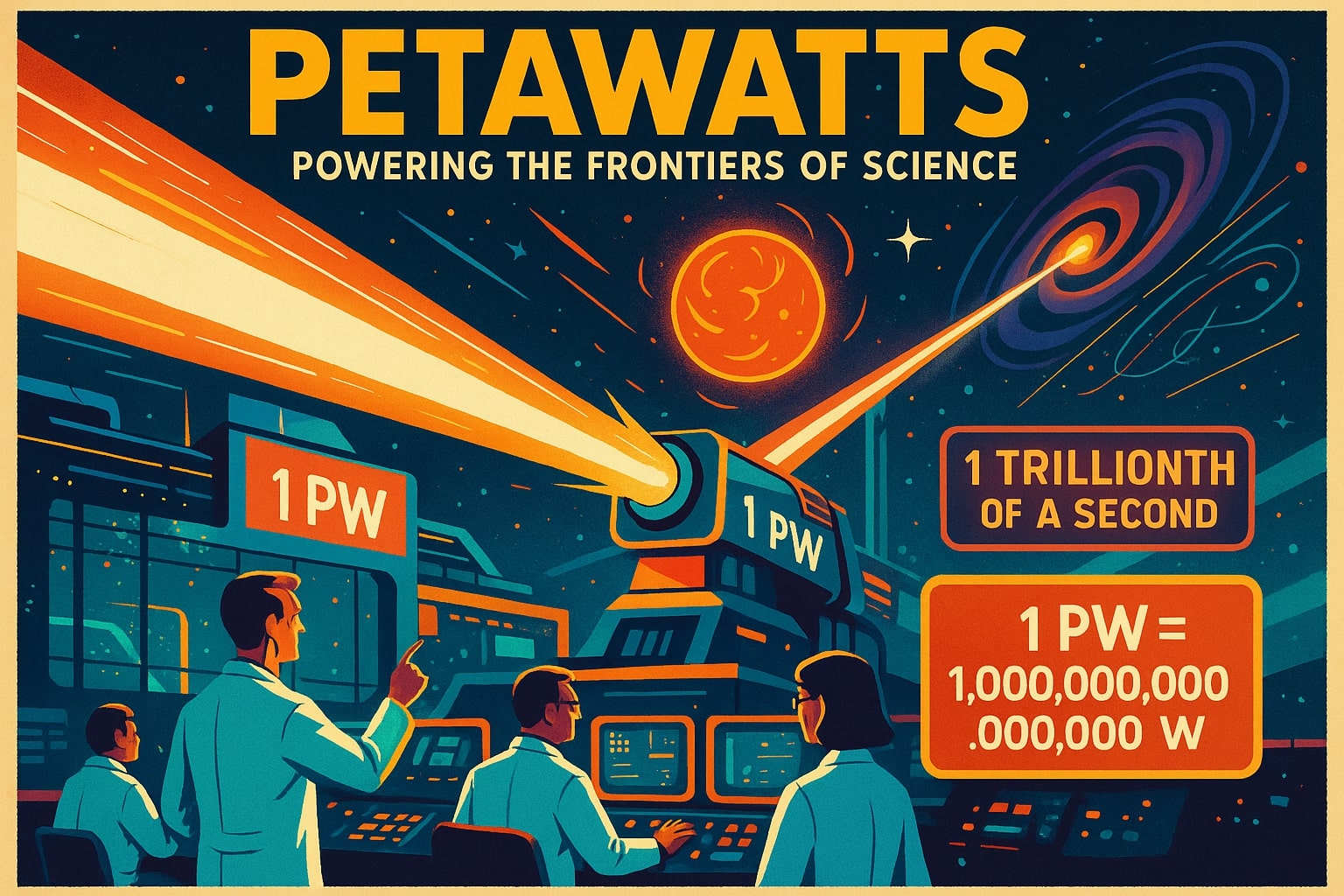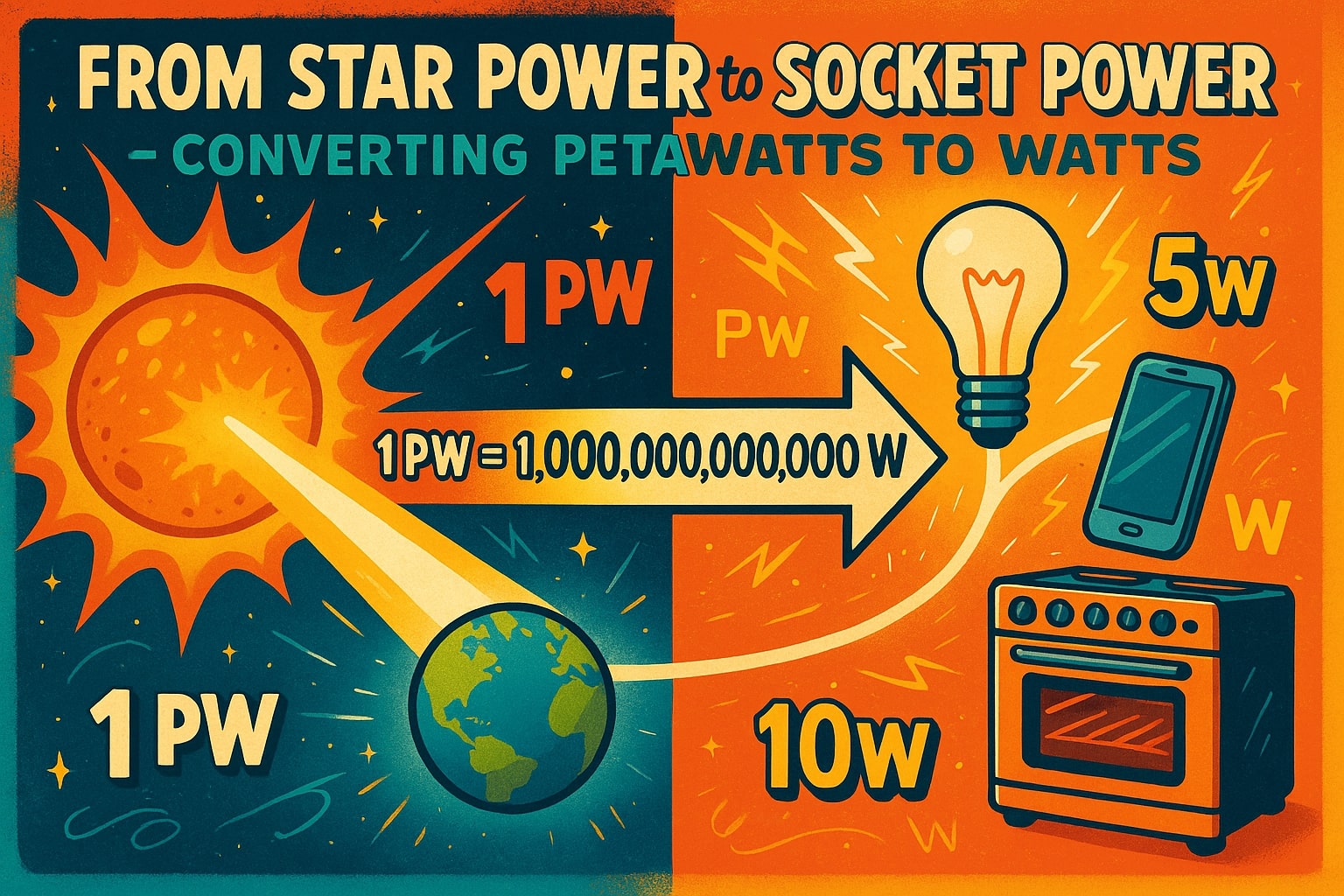Petawatt to Watt – How to convert PW to W
Need to convert petawatt to watt? These two units represent some of the largest and smallest scales of power measurement. Watts are what you see every day — powering devices, appliances, and small systems — while petawatts measure energy outputs so massive they’re used to describe natural forces or the limits of experimental science. Even though they’re separated by a factor of one quadrillion, the conversion is straightforward because both are part of the metric system. Here’s how to do the math, where these units appear, and why translating between them helps put extreme energy scales into perspective.

What is a petawatt (PW)?
A petawatt equals 1 quadrillion watts (1 × 10¹⁵ W). It’s such a huge unit that it rarely shows up in human-made systems, but it’s used for natural energy flows, like the power of sunlight reaching Earth, or in describing peak outputs of high-energy physics experiments.
For example, some of the world’s most powerful lasers — used in fusion research — can reach petawatt-level peak powers, though only for fleeting moments measured in femtoseconds.
What is a watt (W)?
A watt is the SI unit of power, defined as one joule per second. It’s everywhere in daily life, from the 5 W drawn by a smartphone charger to the 2,000 W consumed by an electric oven.
Because all power units scale back to watts, converting petawatts to watts bridges the unimaginable — like solar radiation hitting Earth — with energy levels we can actually relate to in homes and industries.
How to convert petawatt to watt
The conversion is simple:
1 petawatt = 1,000,000,000,000,000 watts (1 PW = 10¹⁵ W)
To convert:
Watts (W) = Petawatts (PW) × 1,000,000,000,000,000
Example: If a scientific laser fires at a peak of 2 PW:
2 × 1,000,000,000,000,000 = 2,000,000,000,000,000 W (2 quadrillion watts)
Skip the long string of zeros by using our Power Converter or check other Conversion tools for instant results.
Did you know?
-
Solar influx: Earth receives about 173,000 terawatts (173 PW) of solar energy at the top of its atmosphere every day — an energy flow thousands of times greater than humanity’s consumption.
-
Laser breakthroughs: The National Ignition Facility (NIF) in California has lasers that briefly reach powers exceeding 1 PW, helping researchers test nuclear fusion and study astrophysical phenomena.
-
Earth’s storms: The energy released by a massive hurricane can average around 0.6 PW when accounting for its heat output — far beyond human-scale power systems.
-
Perspective check: Humanity’s average energy demand is about 20 terawatts (0.02 PW), meaning global consumption is still just a fraction of the energy Earth receives from the Sun.
How Petawatts Power Science
While no electrical grid or industrial system runs at petawatt levels, experimental science pushes into this range. According to research published in Nature Photonics, petawatt-class lasers have been used to recreate the extreme conditions inside stars, enabling scientists to study nuclear fusion, black hole physics, and ultra-intense particle acceleration.
Though the lasers only sustain these powers for trillionths of a second, converting their output into watts helps engineers evaluate safety, efficiency, and compatibility with existing measurement systems.

Scaling the Extreme to the Everyday
Converting petawatt to watt is simply multiplying by one quadrillion, but the conversion connects two extremes: the immense energy flows in nature and cutting-edge experiments with the devices and systems we use every day. Watts make colossal figures comprehensible, while petawatts help describe the raw forces of our universe.
For fast and accurate calculations, use our Power Converter or explore other Conversion tools to simplify any power conversion, no matter the scale.

